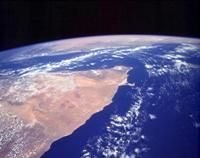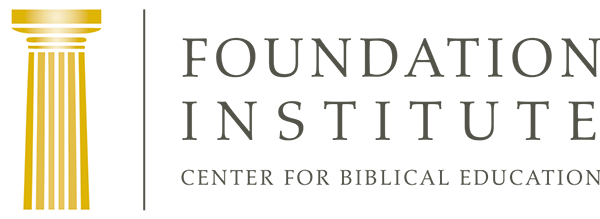Tears for Somalia
Written by Karen Meeker
 Drought and famine have a human face, and it is heartrending.
Drought and famine have a human face, and it is heartrending.
The image of the face of a starving child is heartrending. Just go on YouTube, type in “Somalia drought” or “Somalia famine” and you’ll see what I mean.
As I clicked through segment after segment, the stories, the faces, the haunting desperate eyes, the dried-up breast with a starving infant attached, the desiccated skin covering the misery of tiny, protruding bones all blended into a tragic mosaic of suffering and hopelessness.
Starvation—a fact of history
The Horn of Africa is no stranger to drought and famine. But neither is much of the rest of the world. In the 20th century an estimated 70 million people died in famines brought on by drought, conflict, government policy, flood and market failure.
The numbers are staggering. In 1927 northwest China lost an estimated 3 to 6 million people due to natural disasters; and in 1958-62, up to 33 million due to government policy. In 1932-34 Ukraine in the Soviet Union lost an estimated 7 to 8 million due to government policy. In 1995-99 North Korea suffered huge losses due to flood and government policy—an estimated 2.8 to 3.5 million! (See Stephen Devereux’s Famine in the Twentieth Century, p. 6, for a list of famines and their causes.)
Faces of hunger
Those numbers are beyond my comprehension, and yet with the amazing technologies of TV, cable and the Internet, I am able to put a real-time face to similar horrifying events.
Most of the time, that face belongs to a mother, often emaciated herself, who has gone to heroic lengths to get food and aid for her children. One I saw interviewed had walked for days with her children to get to a camp in Kenya. She had not seen her soldier husband in more than five years. The survival of the family rests squarely on her shoulders.
One of the most poignant reports showed a seven-month-old infant who was brought to a medical facility by his mother. As she handed him to a doctor, his eyes were wide with terror, his body limp as a marionette with no one pulling the strings, too weak to utter a sound. Immediately an IV was inserted and life-giving fluids filled his veins. The next morning he was able to make a feeble croaking cry—a cause for guarded hope. He just may pull through. Time will tell.
Reality check
Over the years I have read and reread Bible accounts of drought and famine experienced by individuals like Abraham, Isaac and Jacob. It was famine that drove Naomi and Ruth and their families to Moab. Then there was the desperate plight of the widow of Zarephath and God’s miraculous intervention to save her and her son. Even the New Testament Church was faced with that deadly specter, and fellow Church members were moved to send relief.
 How many times have I read these accounts of drought and famine with little attention or curiosity, and certainly with no real comprehension of their ramifications? Why have I never bothered to know more than just that the word drought signified the obvious potential of crop failure? It could signal the beginning of a lengthy, deadly cycle.
How many times have I read these accounts of drought and famine with little attention or curiosity, and certainly with no real comprehension of their ramifications? Why have I never bothered to know more than just that the word drought signified the obvious potential of crop failure? It could signal the beginning of a lengthy, deadly cycle.
Cycle of death anciently
As crops failed during a prolonged drought, food supplies dwindled resulting in exorbitant prices. There were no Burpee’s seed catalogs, and survival depended on a plan of saving back seed and God’s blessing of good weather and plentiful rain. Once the seed was gone, there would be no more food crops, and widespread hunger would worsen. Loss of crops also resulted in loss of trade; eventually even money would run out. And so would hope and options.
No end in sight
Over time nations have learned to anticipate, plan for and manage such deadly cycles. However, Somalia, with no infrastructure in place and a failed government, has little with which to extricate itself from its current crisis. While often in the Bible God Himself used drought and famine as a punishment to teach ancient Israel lessons, there are also those instances recorded of war-precipitated famine—another factor impacting Somalia today. (See 2 Kings 6 for a horrifying account of the extremes to which people were driven.)
And its distress may yet be compounded by the threat of disease epidemics. In the 1990s famine, 40 percent of Somalia’s population died from measles. Health officials now worry about a potential outbreak of cholera. On top of that, it’s predicted that the rains won’t improve until 2013 (“Hawa’s Haven,” Newsweek, Aug. 15, 2011, p. 47). What a bleak future they face!
When Help arrives
While some in the world are acutely aware of this dreadful situation in Somalia and are desperately trying to get aid to its poor and starving, history indicates that the cycle is destined to repeat itself, if not there, then in other places in Africa and beyond.
A larger Hand will have to intervene to stop the cycle once and for all. I have every confidence it will. In fact this hopeful psalm predicts it:
“Let the peoples praise You, O God; let all the peoples praise You. Then the earth shall yield her increase; God, our own God, shall bless us. God shall bless us, and all the ends of the earth shall fear Him” (Psalm 67:5-7).
 Until then I can only watch and cry and pray and wait.
Until then I can only watch and cry and pray and wait.
Karen Meeker has visited East Africa and is grateful that she did not witness such suffering. For an inspiring account of Dr. Hawa Abdi’s attempt to help her native Somalia and the terrors she has faced, read “Under Siege in Somalia,” by Dr. Hawa Abdi with Sarah J. Robbins, Newsweek, Aug. 15, 2011, pp. 42-47.








